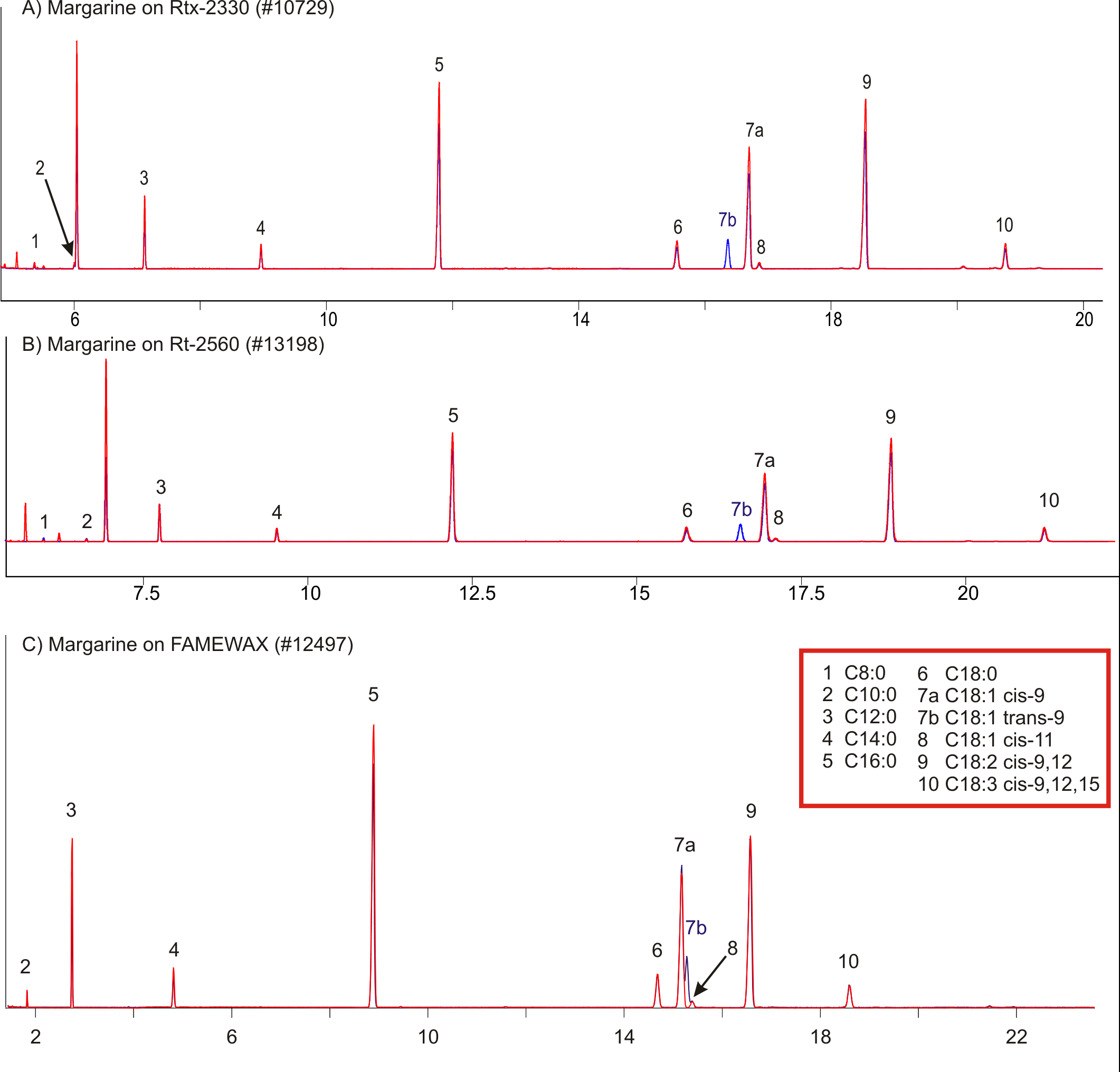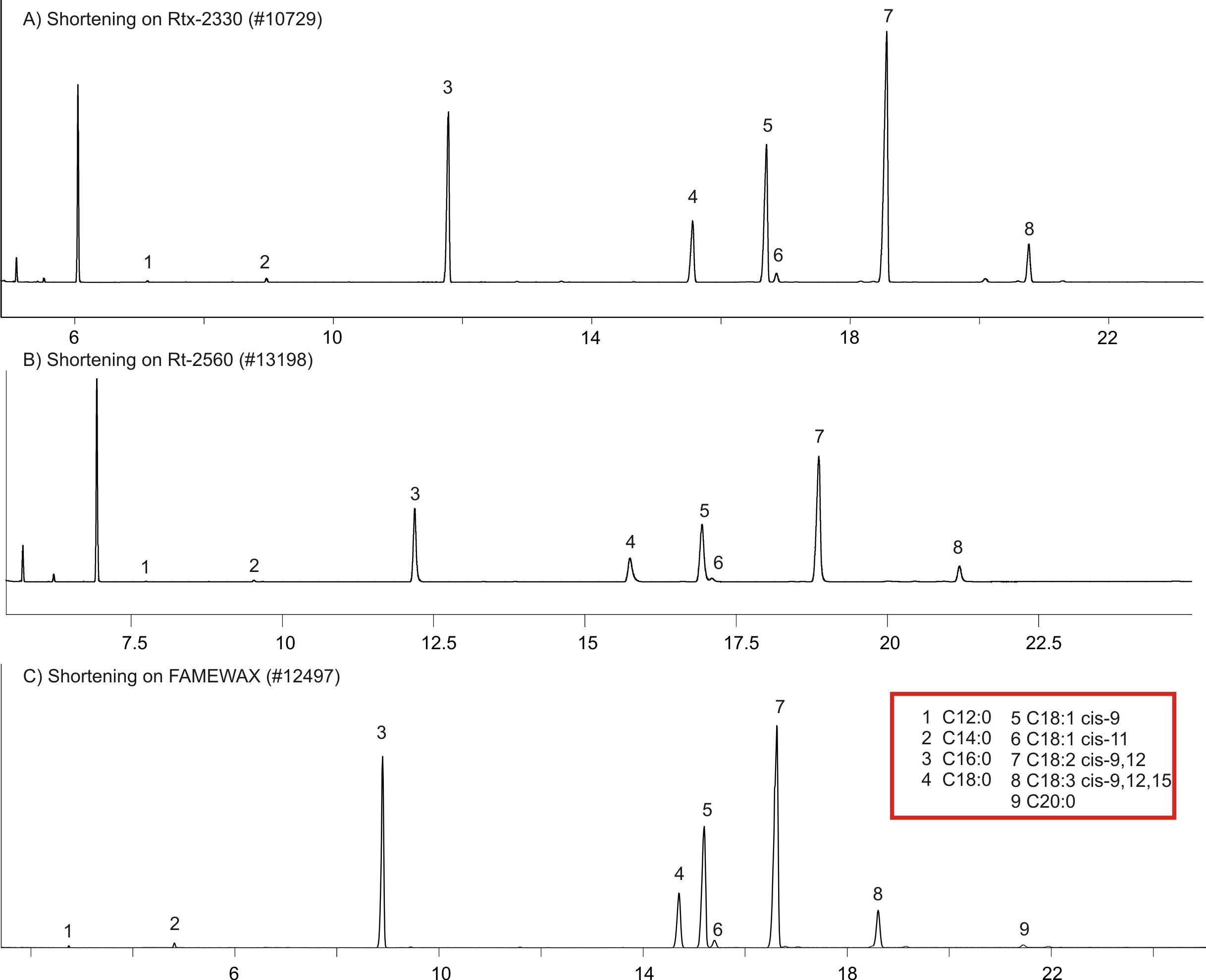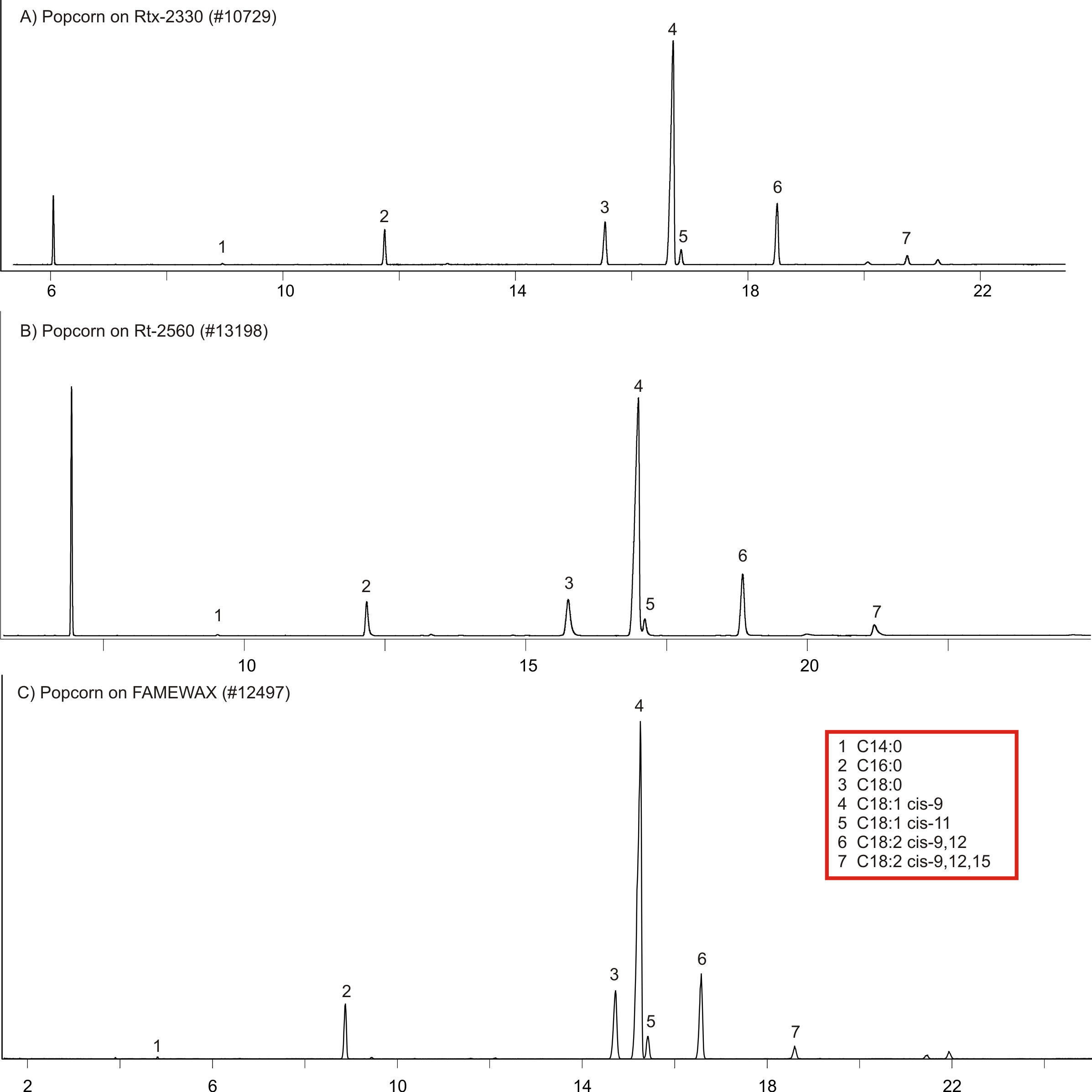Banning Artificial Trans Fats: Are we ready?
- Like
- Digg
- Del
- Tumblr
- VKontakte
- Buffer
- Love This
- Odnoklassniki
- Meneame
- Blogger
- Amazon
- Yahoo Mail
- Gmail
- AOL
- Newsvine
- HackerNews
- Evernote
- MySpace
- Mail.ru
- Viadeo
- Line
- Comments
- Yummly
- SMS
- Viber
- Telegram
- Subscribe
- Skype
- Facebook Messenger
- Kakao
- LiveJournal
- Yammer
- Edgar
- Fintel
- Mix
- Instapaper
- Copy Link
Posted: 29 November 2018 | Restek | No comments yet
Partially hydrogenated vegetable oils are increasingly being banned due to the health risks of artificial trans fats. Is your lab ready to detect these compounds in food?


One of the leading causes of deaths in the world is heart disease, accounting for approximately 24% of deaths in the USA in 2015.1 One of the factors linked to cardiovascular diseases is consumption of artificial trans fatty acids (TFAs). Artificial TFAs are a by-product of partially hydrogenated vegetable oils, which were introduced as a replacement for saturated fatty acids found in butter, after concerns about adverse health effects. The TFAs have a benefit of a higher boiling point than their cis counterparts allowing for denser packing leading to a more solid form of hydrogenated oils.2 However, this is not the only way that cis and trans fatty acids differ. While cis fatty acids help maintain a healthy balance between low-density and high-density lipoprotein cholesterols (LDL and HDL, respectively), the artificial TFAs increase LDL levels and decrease the HDL levels. In addition, TFAs increase total levels of cholesterol, effectively increase the risk of cardiovascular disease.2
There is a push to eliminate the partially hydrogenated oils (the main source of artificial TFAs) globally. In Europe Denmark was the first to execute legislative implementation in 2004, followed by Austria, Sweden, Hungary and Latvia, while other European countries implemented guidelines for voluntary self-regulation.3 In the United States, the FDA declared partially hydrogenated oils as not “generally recognised as safe” in June of 2015 and food manufacturers have been given three years to phase them out (unless otherwise approved).4 On May 14, 2018, World Health Organisation (WHO) together with the non-profit Resolve to Save Lives released a step-by-step guide for the elimination of industrially produced TFAs with the goal of completely phasing out partially hydrogenated oil and artificial TFAs by 2023.5
Less than a month away from the US ban of artificial TFAs, we have decided to test products that traditionally contain TFAs– margarine stick, shortening and butter flavoured popcorn. The margarine and shortening were purchased at a local grocery store, while the popcorn was bought at a dollar store. The fatty acids were trans-esterified using sodium methoxide, following a method by Ichihara et al6 and analyzed on multiple Restek columns, namely Rtx-2330, Rt-2560, and FAMEWAX. All these columns can be used for fatty acid methyl esters (FAMEs) analysis, where Rtx-2330 is a general use polar columns with cyano-polymer stationary phase, while FAMEWAX is formulated to deliver comparable elution order to other Carbowax columns with better FAMEs resolution. RT-2560 is specifically formulated to ensure accurate quantification of critical cis/trans FAMEs.
Let’s start with the individual products. Margarines previously contained 10-20 % of saturated, 30-40 % monounsaturated, 20-30% polyunsaturated fatty acids and approximately 15% TFAs.7 We tested the new margarine and the composition was approximately 40% saturated (peaks 1-6, Fig. 1), 23% monounsaturated (peaks 7a- 8, Fig. 1), 37% polyunsaturated fatty acids (peaks 9-10, Fig. 1) and no TFAs (peak 7b, Fig.1). This shift is caused mostly by addition of palm and palm kernel oils, which contain more saturated fatty acids (approximately 50% and 80%, respectively).8-9 In Figure 1 we can see chromatograms of the trans-esterified margarine stick without any alterations (red), and a sample spiked with methyl elaidate (methyl trans-9-octadecenoate), the most common artificial TFA added.


Figure 1: GC Analysis of trans-esterified margarine stick. Red – original sample, blue – sample spiked with methyl elaidate (peak 7b).
The differences between the individual columns are apparent. Both cyano polymer-based columns (Rtx-2330 and Rt-2560, Fig. 1A and B, respectively) elute transisomers before the cis. This is particularly advantageous because even when using GC-MS we cannot distinguish the isomers based on their EI spectra. This helps to unambiguously determine the identity of peak 8 as methyl cis-11-octadecenoate. When it comes to Carbowax polymer-based columns, trans isomers elute right after its cis counterparts. Nevertheless, FAMEWAX column is capable of separating the cis/trans isomers (we can see two distinct peaks, Fig. 1C peak 7a and 7b).
The next product we analysed was shortening. Traditionally shortening can contain as much as 40% of industrial TFAs.10 As with the margarine, the shortening we bought had no significant TFAs present (Fig. 2). In contrast to the margarine, the polyunsaturated fatty acids in shortening accounted for almost 50% of FAMEs, which was also in direct contradiction with the product’s label of 20.8% polyunsaturated fatty acids.


Figure 2: GC Analysis of trans-esterified shortening
It is worth noting that the relative content saturated of fatty acids’ in shortening is lower than in margarine. This is most likely due to the absence of palm kernel oil, however, the palm oil was still present. Our third sample, butter-flavoured popcorn (Fig. 3), contained no palm or palm kernel oil, resulting in the least amount of saturated fatty acids, approximately 16%. In addition, the popcorn contained the most monounsaturated fatty acids (mainly oleic acid) – approximately 67% of total FAMEs. This can be attributed to the oil source – while fats in both margarine and shortening are comprised of soybean oil, palm oil and palm kernel oil (margarine only), popcorn’s source of fat is canola oil and fully hydrogenated cottonseed oil.


Figure 3: GC Analysis of trans-esterified popcorn’s butter flavoring
Overall, our evaluation confirmed that US food producers ditched the artificial TFAs. On the other hand, the introduction of palm and palm kernel oil means increases in the saturated fatty acids’ content. When it comes to column selection, FAMEWAX provides great separation of the majority of FAMEs with shorter analysis times (especially for longer chains), however, if you need to quantitatively determine the TFAs, Rt-2560 is the best choice.
For more information about TFAs click here and for more information about Rt-2560 click here.
References:
- Leading Causes of Death
- Trans fatty acids – A risk factor for cardiovascular disease
- Report from The Commission to The European Parliament and The Council
- Final Determination Regarding Partially Hydrogenated Oils
- WHO plan to eliminate industrially-produced trans-fatty acids from global food supply
- Fatty acid analysis of triacylglycerols: Preparation of fatty acid methyl esters for gas chromatography
- Basic Report: 04629
- Basic Report: 04055
- Basic Report: 04513
- Basic Report: 04667
The rest of this article is restricted - login or subscribe free to access


Why subscribe? Join our growing community of thousands of industry professionals and gain access to:
- bi-monthly issues in print and/or digital format
- case studies, whitepapers, webinars and industry-leading content
- breaking news and features
- our extensive online archive of thousands of articles and years of past issues
- ...And it's all free!
Click here to Subscribe today Login here
Related topics
Food Safety, Health & Nutrition, Ingredients, Regulation & Legislation








